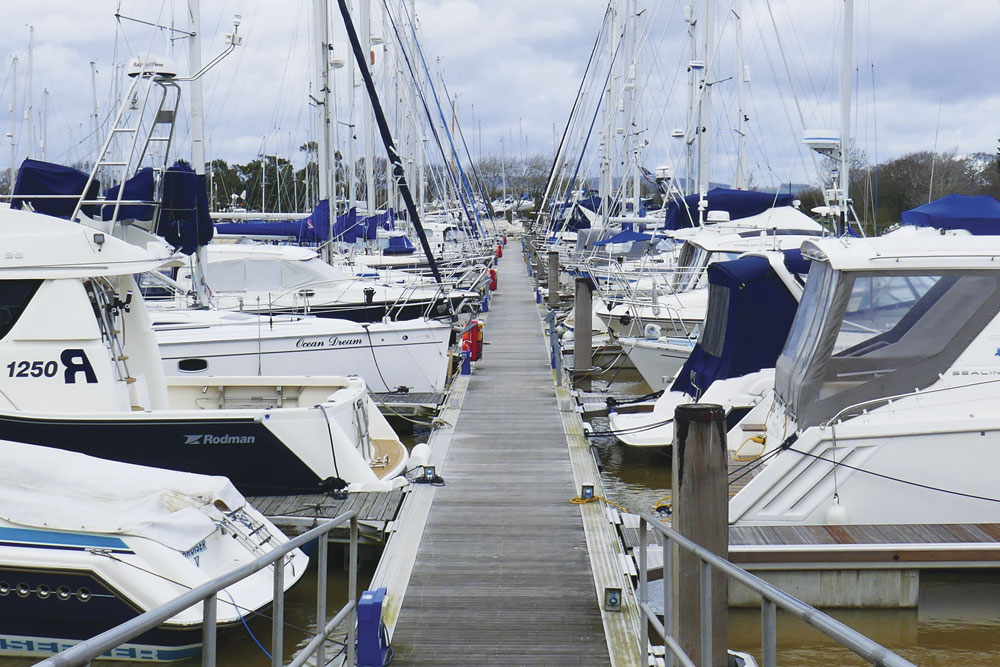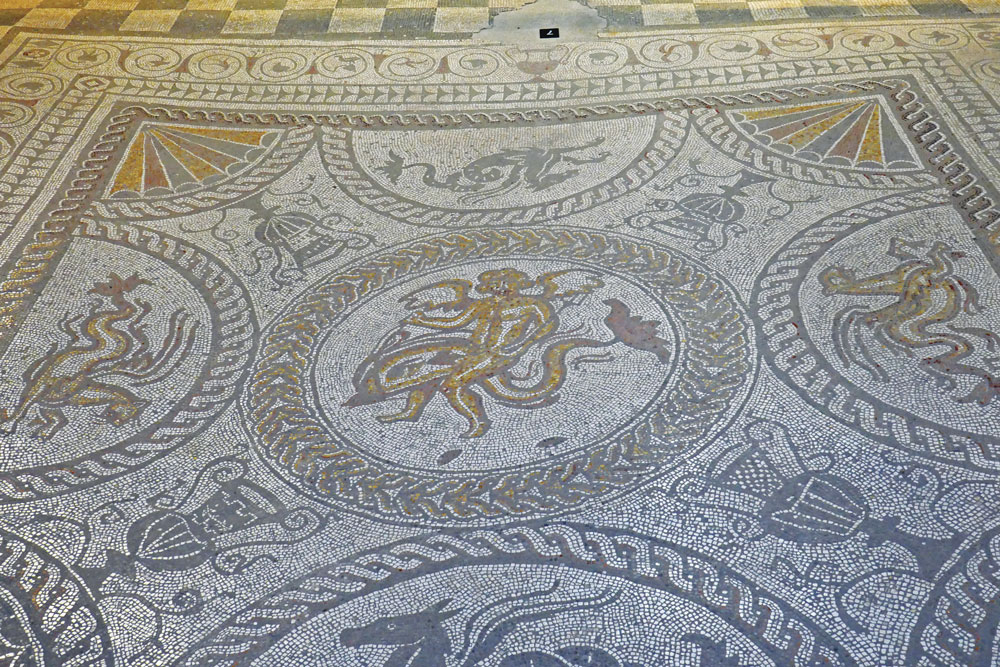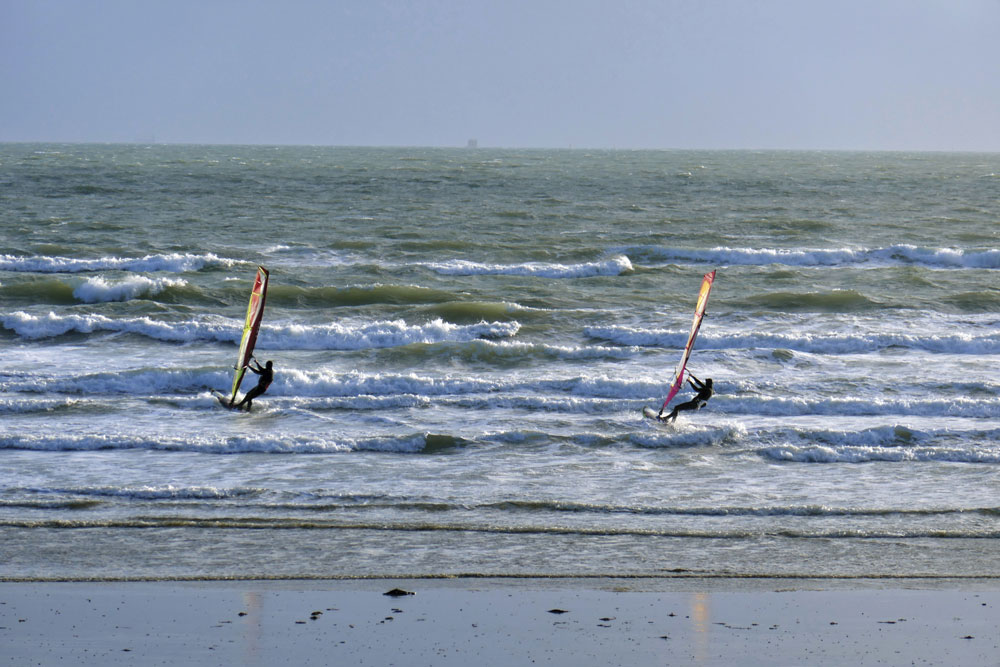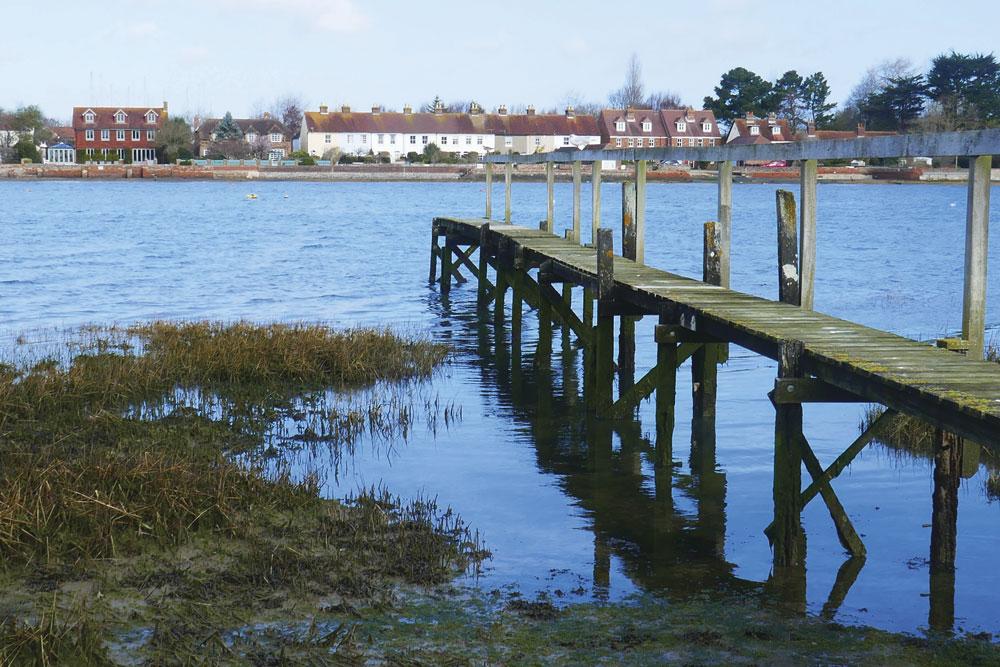Campervan travel inspiration: a weekend in Chichester
See also: Campervan: Travel and Destination Guide
Words & Photos by Carol Kubicki
This feature was written prior to the coronavirus pandemic. We are publishing it for your enjoyment and to help you plan your future trips. Readers most follow the latest government advice before leaving their homes. Consult www.gov.uk/coronavirus
In some ways it is a pity we have a campervan and not an aeroplane as you could really appreciate the extent of Chichester Harbour from above.
Designated an Area of Outstanding Natural Beauty, from the air you could trace the mosaic of tidal channels and inlets, sand dunes, salt marshes and historic villages in this corner of Sussex. As it was, I had to rely on the Ordnance Survey map to get to grips with this intriguing landscape.
A gale can resculpt this low-lying coastal land overnight and history lies beneath this shifting terrain. When sea levels were lower the tidal channels were lush valleys but, by the Iron Age, salt was being produced from seawater in the sheltered inlets.
The Romans used Chichester Harbour as a port and through the medieval period this was an industrial hive of activity with oyster farming, boat building and brickmaking.

Fishbourne Roman Palace
At the end of a crooked finger of a channel lies Fishbourne and its vast Roman Palace. In school I learnt about this captivating and exotic fragment of Italy in southern England. I read stories of Romano-British citizens living in luxury, wandering across intricate mosaic floors with underfloor heating before relaxing on couches drinking wine and strolling through sunny courtyards.
It wasn’t just raining when we arrived at Fishbourne Roman Palace, we ran across the car park in a storm. Fortunately, the museum is under cover. Built in the first century, the best guess is that this impressive villa of around 100 rooms was both a military site and home to Togidubnus, king of the local tribe.
The house was abandoned in the third century, the stones and pillars removed to be reused elsewhere. The elaborate mosaic floors were left, gradually disappearing under soil and lost to local memory, until a man with a digger arrived to lay pipes for housing and unearthed a piece of history.
The three-dimensional model is a good place to start, helping me grasp the scale and layout of the four-winged villa around a central garden that once covered an area the size of two football pitches. Today, only the floors of the northern wing and the restored Roman garden can be seen.
The floor mosaics are stunning; in particular the colourful and complex Cupid and dolphin mosaic from the dining room, made from 360,000 tesserae. The guide pointed out what different imagery represented and explained this would have been created by a team of trained British mosaicists. He also showed us the various inconsistencies in the otherwise symmetrical pattern, believed to be deliberate and perhaps used as a party game – a sort of floor-based ‘spot the difference’.

Chichester Cathedral
Driving into nearby Chichester we abandoned our plan to walk around the city’s walls and chose to visit Chichester Cathedral. Visitors are welcomed warmly and handed a self-guided tour leaflet.
I wanted to see the wooden mice that are carved on some of the cathedral’s oak furniture. “We usually only tell children about those,” the guide said. Well, some of us are still young at heart! The twentieth century furniture maker Robert Thompson’s signature was a carved mouse and it is said that he adopted this after he had complained to a colleague that he was as poor as a church mouse.
After finding the exquisite carved mice I admired the rest of this magnificent cathedral dating from the eleventh century. The clerestory brings in light and there is colour from tapestries, paintings and stained-glass windows.
In particular, the 1960s Piper Tapestry behind the altar creates a vibrant backdrop. I found the memorial to Gustav Holst, the composer, whose ashes are interred here and the delightful tomb to the fourteenth century Earl and Countess of Arundel, with a dog tucked at the countess’ feet.
Chichester's Novium Museum
Another of Chichester’s indoor attractions is the Novium Museum, built over the remains of a Roman bath house and displaying local finds. The Romans called Chichester Noviomagus Reginorum and expanded and defended the town.
The museum records stories from different layers of Chichester’s history. We both smiled in recognition upon reading that it was in Chichester that a butcher founded Shippam’s and its sandwich spreads are still made here.
We were soaked after battling through wind and rain along muddy paths at the RSPB Pagham Harbour reserve in the hope of seeing Brent geese. We watched a curlew fly over the tidal channels and shelduck on a pool – but there was no a sign of the elusive Brent goose.
We were camping in East Wittering, one of the ‘Thankful Villages’ where no men were killed in WWI. With much of the grass at Scotts Farm campsite waterlogged and no hardstanding pitches available, the friendly receptionists let us stop on a strip of surfaced road and we were soon snug in the campervan while the deluge continued.
Next morning dawned brighter. Catching the frequent bus service to Chichester we picked up the Walls Walk, a well-signed 1½-mile route with plenty of variety to linger over. The best view of the cathedral is from the attractive Bishop’s Palace Gardens where volunteers were working to keep them tidy.
North of the city a wide path follows the top of the walls and we could peer into the gardens of houses alongside while squirrels leapt from the walls into the overhanging trees. Built by the Romans, the walls were restored in the fourteenth century when there were fears of a French invasion. In the nineteenth century the section around Priory Park and the cricket ground became a popular promenade.
Chichester Canal
Chichester Canal is now a short navigable remnant of what was once the route from London to Portsmouth; a regular cargo was bullion for the Bank of England.
We followed the canal to the marina, admiring the yachts and houseboats. We were on the Salterns Way, a 12-mile walking, cycling and wheelchair route from Chichester to West Wittering, named for the salterns (salt pans) that were once prevalent here.
We walked towards the charming coastal village of West Itchenor, stopping to see the lovely Saxon church and making a detour to the pretty sheltered quay where boats bobbed on the water. A seasonal passenger ferry runs from here towards Bosham.
West Wittering is tucked away in a secluded corner and this might be why it was England’s last pagan outpost.
Christianity arrived with the exiled Wilfrid, Bishop of York, late in the seventh century. It is said he arrived during a long drought and showed people how to survive by catching fish. This – and his inspirational preaching – persuaded many to convert to Christianity and, on the day they were baptised, it rained!
West and East Wittering

There was no danger of drought during our visit but the weather was improving and, in West Wittering, we were able to pack away the waterproofs and have a swift half in the pub before heading for the expansive sands lined with colourful beach huts. To the west we could see Portsmouth and windsurfers making the most of the breeze.
We walked around the sand dunes of East Head, a spit of land that, so it is said, can shift 30 yards during a night of heavy seas. Following the beach eastwards, along sands that were used for practice runs for D-Day, the wind was behind us making walking much easier.
Nearer to East Wittering the sand dunes gave way to houses and we crunched on the shelving shingle beach, climbing over each wooden groyne and finding shells and driftwood washed up during the storm.
In striking low sun, a horse cantered along the tide line, a group of windsurfers were kitting up to take advantage of the last light and a rainbow appeared over the fields. We reached the campervan just before the next shower.
Bosham is picturesquely situated between two tidal creeks on another of Chichester Harbour’s channels. Claiming to be one of the most photographed villages in southeast England, as soon as you arrive you can see why.

We walked through narrow lanes passing a scattering of thatched cottages to Quay Meadow, overlooking Bosham Channel and scenically flanked by the church and mill stream. In morning sunshine, I walked around the inlet for the classic photograph of the village, finally spotting Brent geese on the way.
High tide was near and the road I had taken for my photograph was impassable by the time I returned to the village. Road signs poked out of the water. Outside the tea shop there was a high-tide line of debris. Bosham really feels like it is only inches away from being washed out to sea!
Bosham’s church features on the Bayeux Tapestry as it was from here that Harold set sail to Normandy in 1064. Some think that this is also where King Canute tried to use his royal power to turn back the tide. In truth, not even royalty can control the waves here. Be warned: if you park on the coastal road at low tide you may very well return to a submerged vehicle, which is apparently a regular sight.
We had explored the intricate channels and inlets of Chichester Harbour and unearthed fascinating history. I’d managed to get a feel for this beautiful and unspoilt corner of England without that aeroplane after all.
Costs of the trip (three nights)
Fuel average: 34mpg (530 miles) £92
Site fees: £46.50
Entrance fees, two adults: Fishbourne Roman Palace and Gardens £19.60
Parking: Chichester and Bosham £2.70
Public transport, two adults: Chichester bus day tickets £17.60
Total: £178.40
Useful information
Nestled at the foot of the South Downs visitchichester.org
Roman splendour at Fishbourne sussexpast.co.uk
Welcoming people through its doors for ove nine centuries chichestercathedral.org.uk
Canal boats offering schedule and chartered trips chichestercanal.org.uk/boat-trips
Try to spot Brent geese at Pagham; visit between October and spring for the best chance rspb.org.uk
This trip took place prior to the coronavirus pandemic. We are publishing it for your enjoyment and to help you plan your future trips. Read the latest camping travel advice here.
Expert Campervan advice to your door!
Campervan is the exciting monthly magazine that will give you all the inspiration you need to explore the world in your campervan. Every issue is packed with real-life campervanning experiences, inspiring travel ideas in the UK and further afield, the best campsites to stay on, campervan road tests and reviews of the latest models, and much more!
Want to know more about Campervan Magazine?








Recent Updates
Engine management lights: all you need to know
What is the engine management light? What does it mean, and what do I have to do? ...
Motorhome air suspension: all you need to know
Motorhomes are heavy and the additional weight of equipment and height of the bodywork can increase the loads ...
Motorhome WiFi: how to get better motorhome internet
Staying connected on the move is more and more essential, so relying on campsite WiFi isn't an option – here ...
A class of their own - our guide to A-class motorhomes
Thinking of trading up to an A-class, or even going straight to the top of the motorhome tree? We guide you ...
Explore overseas on a motorhome dream tour
Enjoy exotic travel in a campervan or motorhome by hiring, swapping with someone else or exporting your ...
Motorhome water systems: everything you need to know
On-board water is an important part of every motorhome – here’s everything you need to know ...
Campervanning in Europe: what you need to know
Whether you're planning a leisurely drive through the French countryside, navigating bustling city streets in ...
Campervan security: all you need to know
With thefts on the increase, it’s important to know how to keep your campervan secure and prevent campervan ...
Campervan furniture: everything you need to know
Our campervan experts guide you through all the essentials for your campervan, including tables, chairs, ...
Campervan finance: how to fund your purchase
Here we look at the different types of campervan finance available, to help you decide what’s the best option ...
Other Articles
Britain’s best used motorhomes
Want a great motorhome without paying the premium for a new one? Here's a guide to the best you can get in the pre-owned market for each layout, ...
Which motorhome? Choosing the perfect motorhome for you
Choosing a motorhome or campervan is one of the biggest buying decisions you’ll ever make, so it's important ...
Campervan washroom essentials: stay fresh on the road
Our guide will take you through the campervan washroom essentials you'll need so you're well-prepared for ...
Dogs in campervans: all you need to know
Follow our advice and your dog will enjoy campervanning as much as you do ...
Electric campervans: all you need to know
Our guide will take you through everything you need to know about electric campervans and what the future ...
Motorhome electrics: a complete guide to your motorhome electrical set-up
Motorhome electrics can dramatically enhance the convenience and comfort of your vehicle – but they can be ...
Lighting for campervans: all you need to know
We guide you through all the lighting options available for you and your campervan, including interior ...
Electric bikes for motorhomes: our ultimate guide
Read our comprehensive guide to electric bikes for motorhome owners, helping you add electric power to your ...
Our guide to 'cheap' motorhomes in 2024
If you're on the hunt for an affordable new motorhome, this is the best place to start – we've rounded up a ...
Campervans in winter: all you need to know
Here's your guide to preparing your campervan for the colder months, whether you will be using it or putting ...